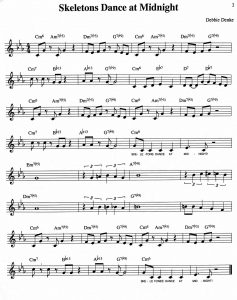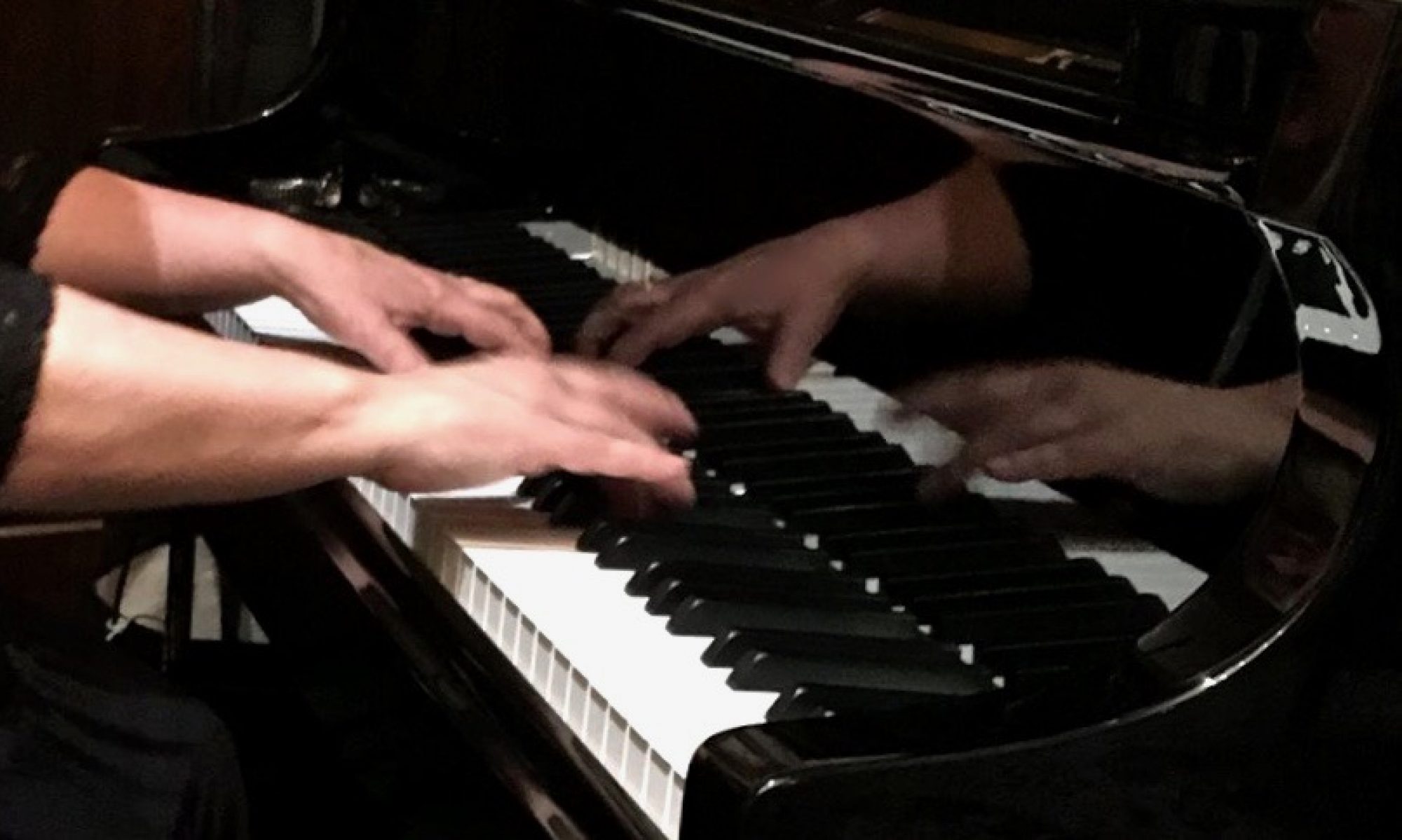Ever wonder what would happen if you took Rhythm Changes and put them in a minor key? You just might get a spooky October surprise!
First, let’s define “Rhythm Changes“. (It has nothing to do with a rhythm changing or any meaning close to that. This jazz musician term is simply a shortening of the phrase, ‘Play the same chords (aka the changes) that George & Ira Gershwin used for their popular tune, I Got Rhythm’. Knowing how to improvise over Rhythm Changes (especially in the key of Bb), is an expected part of every jazz musician’s repertoire, next in line after being able to improvise over the 12 bar blues form.
When the Gershwin brothers composed I Got Rhythm for the 1930 musical Crazy Girl, the tune quickly became a big hit among jazz musicians for both improvisation and composition. Bebop musicians used the same chords, yet rewrote their own melodies, a device known as a contrafact. Here is just a sampling of tunes based on Rhythm Changes:
Compositions such as Shag (Sidney Bechet), The Theme (Miles Davis), Rhythm-a-Ning (Thelonius Monk), Moose the Mooch & Anthropology (Charlie Parker), Cloudburst (Jon Hendricks), Errand Boy For Rhythm, and with a slight variation Straighten Up And Fly Right by Nat King Cole were all built upon similar chords. Some jazz musicians composed a fixed melody to just the “A” sections of their tunes, expecting to leave up to improvisation the “B” section or bridge to tunes like Cottontail (Duke Ellington), Oleo (Sonny Rollins), and Lester Leaps In (Lester Young). Blue Mitchell took Rhythm Changes, gave them a calypso beat, put them in the key of F, and composed Fungii Mama. Rhythm Changes got used for cartoon music in The Flintstones Theme Song (Bryson/Goldberg). Who can’t forget Ertha Kitt’s sassy Holiday hit Santa Baby (Javits/Springer)? It’s also built on Rhythm Changes!
Most of the tunes modeled on Rhythm Changes use a standard 32 bar AABA form for the melody and solos, although a few tunes (I Got Rhythm, The Flintstones Theme), contain a tag of an 2 extra measures, played most likely as a coda just the final time. (The exception being if the musicians are old school performing in a traditional Dixieland band – then only then they might play and expect to improvise over the 34 bars every time, but that is more the exception than the rule these days).
Basic Rhythm Changes use primarily the I I vi I ii V7 I progression, repeating this progression for each 8 bar “A” section. These chords are used in a plethora of standard tunes, but only when the bridge or “B” section outlines a series of dominant 7th chords lasting 2 bars each: ( I III7 I III7 I VI7 I VI7 I II7 I II7 I V7 I V7 I ) – can we truly say a piece is built on Rhythm Changes.
Take a look at the chart below, Lester Leaps In. The catchy melody is made up of only 4 notes, with a bridge left open to be improvised. I’ve written the chords using the most basic Rhythm Changes:

For the next chart I’ve added some of the more common variations jazz musicians might use to make the tune more interesting/challenging to play. You’ll see more complex chords, and a variety of ways the bass notes move the line upwards, downwards, or around the circle. Some of the chords use alterations such as a +5 or #9 to fit the melody. During improvisation you can of course experiment with chord qualities, and remember a compelling bass line drives the music forward:

Now for the ‘spooky experiment’ part… I wondered what would happen if I took the roots of Rhythm Changes – basically the same chord relationships – but darkened the overall sound by putting my tune in a minor key? Lowering the 5ths and 9ths of chords when moving to minor cadences definately adds a mysterious quality. I changed the key to C minor for the fun of it, and Skeletons Dance At Midnight was born:

A printable copy of Skeletons Dance At Midnight is available in the “Downloads” section of this website. My book/audio method Amazing Phrasing – Keyboard discusses Rhythm Changes for the final tip, Idea #50. I’d like to give a shout out to jazz educator Jeff Antoniuk for his valuable post on pianist Art Tatum’s Rhythm Changes chord variations found here:
Who could ask for anything more? Who could ask for anything more!

